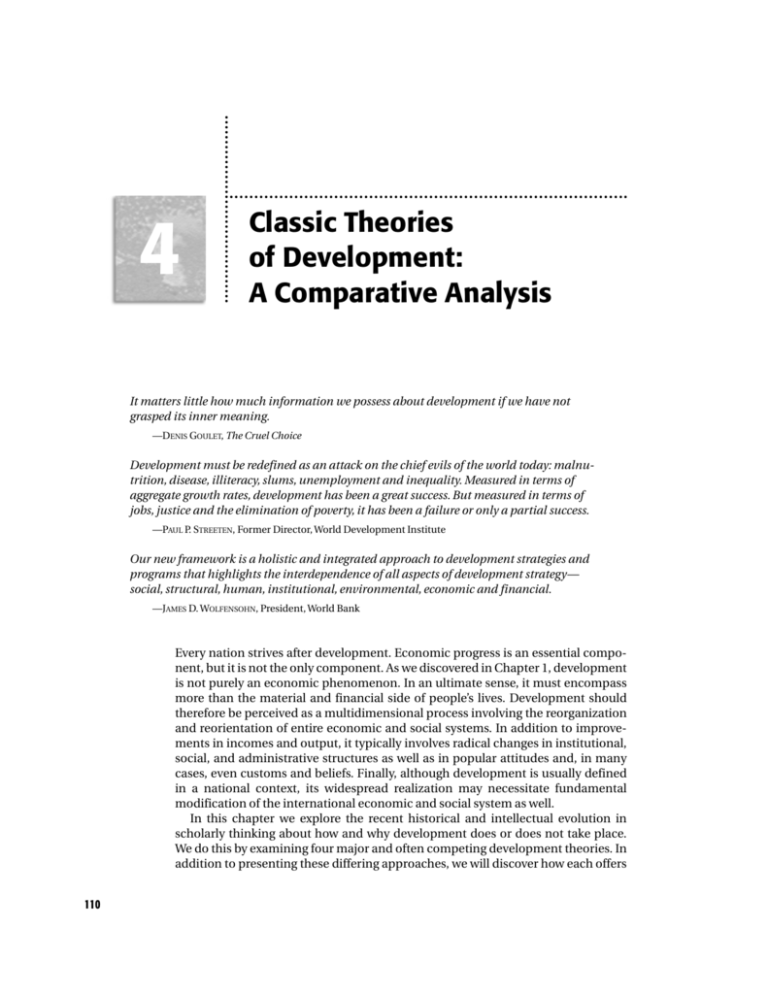
Cryptocurrency and the Global Financial System: An Outlook – Navigating the Future of Finance
The world of money is undergoing a fascinating transformation. For centuries, our financial lives have revolved around traditional banks, government-issued currencies (like the US Dollar or Euro), and established payment systems. But a new player has emerged, challenging the status quo and sparking intense debate: cryptocurrency.
From Bitcoin’s mysterious origins to the everyday chatter about digital assets, it’s clear that cryptocurrencies are no longer just a niche curiosity. They are rapidly becoming a significant force, prompting questions about their role in our global financial system. Are they a disruptive force set to overturn everything we know? Or will they integrate, evolving alongside traditional finance?
This comprehensive guide will break down the complex relationship between cryptocurrency and the global financial system, offering an outlook that’s easy for beginners to understand. We’ll explore what cryptocurrencies are, how they interact with traditional finance, the challenges they face, and what the future might hold.
What Exactly is Cryptocurrency? A Beginner’s Guide
Before diving into the bigger picture, let’s establish a foundational understanding of cryptocurrency.
Imagine money, but entirely digital, secured by advanced computer code, and not controlled by any single bank or government. That’s the essence of cryptocurrency.
Here’s a breakdown of its core components:
- Digital Currency: Unlike the physical cash in your wallet, cryptocurrencies exist purely online. You can’t hold a Bitcoin in your hand.
- Decentralized: This is a crucial concept. Traditional money is managed by central banks and governments. Cryptocurrencies, however, operate on a decentralized network, meaning no single entity has control. Transactions are verified and recorded by a vast network of computers around the world.
- Blockchain Technology: The backbone of almost every cryptocurrency is a blockchain. Think of it as a massive, continuously growing digital ledger or record book. Every transaction (a "block") is encrypted and linked to the previous one, forming a "chain." This makes the ledger incredibly secure, transparent, and difficult to tamper with.
- Cryptographic Security: The "crypto" in cryptocurrency refers to the advanced encryption techniques used to secure transactions and control the creation of new units. This makes transactions incredibly secure and protects user identities.
- Peer-to-Peer (P2P): Cryptocurrencies allow you to send money directly to another person, anywhere in the world, without needing a bank or financial institution as an intermediary.
Key Characteristics of Cryptocurrencies:
- Transparency: While user identities are often pseudonymous, every transaction on the blockchain is publicly visible.
- Immutability: Once a transaction is recorded on the blockchain, it cannot be changed or deleted.
- Global Reach: Cryptocurrencies can be sent across borders instantly, often at lower costs than traditional international transfers.
- Limited Supply (for many): Many cryptocurrencies, like Bitcoin, have a fixed maximum supply, designed to prevent inflation caused by unlimited printing of money.
The Traditional Global Financial System: A Brief Overview
To understand cryptocurrency’s impact, it’s helpful to first understand the system it interacts with. The traditional global financial system is a vast, interconnected network built on:
- Fiat Currencies: Currencies issued and backed by governments (e.g., USD, EUR, JPY). Their value is derived from government trust and economic stability, not a physical commodity.
- Central Banks: Institutions (like the Federal Reserve in the US or the European Central Bank) that manage a nation’s currency, control interest rates, and oversee the banking system.
- Commercial Banks: Private institutions that hold deposits, offer loans, and facilitate payments.
- Payment Networks: Systems like SWIFT, Visa, and Mastercard that enable money transfers and transactions globally.
- Regulations: Extensive rules and laws designed to ensure financial stability, prevent crime, and protect consumers.
Strengths of the Traditional System:
- Stability & Trust: Decades, even centuries, of established operations foster trust and relative stability.
- Regulation & Consumer Protection: Strong regulatory frameworks aim to protect users from fraud and ensure fair practices.
- Accessibility: Widely adopted, with physical branches, ATMs, and established online platforms.
- Lender of Last Resort: Central banks can inject liquidity during crises to prevent collapse.
Weaknesses of the Traditional System:
- Slow & Costly Cross-Border Payments: International transfers can take days and incur significant fees.
- Financial Exclusion: Billions of people globally remain unbanked or underbanked, lacking access to essential financial services.
- Centralized Control: Governments and banks have significant power over monetary policy, potentially leading to inflation or censorship.
- Lack of Transparency (in some areas): While transactions are recorded, the inner workings of banks can be opaque.
Cryptocurrency’s Interaction with the Global Financial System: Current Impact
Cryptocurrencies are not just existing alongside the traditional system; they are actively interacting with it, sometimes disrupting, sometimes complementing.
1. Remittances and Cross-Border Payments
- Disruption: One of the most immediate impacts of cryptocurrency has been on the remittance market. Sending money across borders using traditional services can be slow and expensive, with high fees for migrant workers sending money home.
- Crypto’s Solution: Cryptocurrencies like Bitcoin or stablecoins (digital currencies pegged to a stable asset like the US dollar) allow for near-instantaneous international transfers at significantly lower costs, bypassing traditional banking intermediaries. This is particularly impactful for developing nations.
2. Investment and Asset Diversification
- New Asset Class: Cryptocurrencies have emerged as a new investment asset class. Many view Bitcoin as "digital gold," a store of value that can act as a hedge against inflation or economic uncertainty.
- Speculative Trading: The high volatility of cryptocurrencies also attracts speculative traders looking for quick gains, though this comes with significant risk.
- Institutional Adoption: Increasingly, large financial institutions, hedge funds, and even public companies are allocating portions of their portfolios to cryptocurrencies, signaling growing mainstream acceptance.
3. Decentralized Finance (DeFi)
- Reimagining Finance: DeFi refers to a growing ecosystem of financial applications built on blockchain technology. These applications aim to replicate traditional financial services (like lending, borrowing, and trading) without the need for intermediaries like banks.
- Permissionless Access: Anyone with an internet connection can access DeFi services, regardless of their location or credit history, potentially fostering greater financial inclusion.
- Examples: Users can lend their crypto to earn interest, borrow crypto against their holdings, or trade digital assets directly on decentralized exchanges.
4. Stablecoins: Bridging the Gap
- Pegged Value: Stablecoins are a type of cryptocurrency designed to minimize price volatility. They are typically pegged to a stable asset, like the US dollar (e.g., USDT, USDC) or gold.
- Practical Use: They offer the speed and low cost of crypto transactions while avoiding the wild price swings. This makes them ideal for everyday transactions, remittances, and as a stable medium within the crypto ecosystem for traders.
- Regulatory Focus: Due to their potential to scale, stablecoins are increasingly a focus of regulators concerned about financial stability.
Challenges and Risks for the Global Financial System
Despite their potential, cryptocurrencies introduce several challenges and risks that concern regulators and traditional financial institutions:
- Volatility: The extreme price fluctuations of many cryptocurrencies make them risky for everyday transactions and as a stable store of value. This volatility can also spill over into other markets if crypto becomes deeply integrated.
- Regulatory Uncertainty: The lack of clear, consistent global regulations creates an uncertain environment. Governments are grappling with how to classify, tax, and oversee crypto assets, leading to a "Wild West" perception in some areas.
- Security Risks & Scams: While blockchain itself is secure, exchanges and individual wallets can be vulnerable to hacks. Phishing scams, rug pulls, and fraudulent projects are also prevalent, leading to significant financial losses for users.
- Money Laundering & Illicit Financing: The pseudonymous nature of some cryptocurrencies makes them attractive for illicit activities, posing challenges for law enforcement and anti-money laundering (AML) efforts.
- Scalability & Energy Consumption: Some major blockchains (like Bitcoin) face challenges with transaction speed and energy consumption, raising environmental concerns and questions about their ability to handle global transaction volumes.
- Consumer Protection: In a largely unregulated space, consumers have fewer protections compared to traditional banking, leaving them vulnerable if platforms fail or fraud occurs.
The Future Outlook: Integration vs. Revolution?
The most pressing question remains: Will cryptocurrencies fundamentally revolutionize the global financial system, or will they gradually integrate and evolve alongside it? The answer likely lies somewhere in the middle, leaning towards integration and evolution.
Here’s an outlook on key trends:
1. Regulatory Clarity and Frameworks
- Global Cooperation: As crypto adoption grows, expect increased international cooperation among regulators (e.g., G20, FATF) to establish common standards for consumer protection, anti-money laundering (AML), and financial stability.
- Licensing & Supervision: More countries will likely introduce licensing requirements for crypto exchanges and service providers, bringing them under regulatory oversight similar to traditional financial institutions.
- Taxation: Governments are increasingly focusing on how to tax crypto assets and transactions effectively.
2. Central Bank Digital Currencies (CBDCs)
- Government-Issued Digital Money: This is perhaps the most significant development in the future of money. CBDCs are digital versions of a country’s fiat currency, issued and backed by its central bank. Unlike cryptocurrencies like Bitcoin, CBDCs are centralized.
- Motivations: Central banks are exploring CBDCs to improve payment efficiency, promote financial inclusion, maintain monetary policy control in a digital age, and counter the rise of private cryptocurrencies.
- Impact: If widely adopted, CBDCs could revolutionize payments, potentially making traditional banking less central for basic transactions. They could also reduce the appeal of some private cryptocurrencies for everyday use.
3. Hybrid Models and Institutional Adoption
- TradFi Embraces Blockchain: Traditional financial institutions (banks, investment firms) are not ignoring crypto. Many are exploring blockchain technology for internal processes, cross-border payments, and asset tokenization (representing real-world assets like real estate or art on a blockchain).
- Crypto Products in Traditional Finance: Expect more traditional banks to offer crypto custody services, investment products, and even integrate crypto payments into their existing platforms.
- Interoperability: The future will likely see more solutions that allow traditional finance and decentralized crypto networks to interact seamlessly.
4. Financial Inclusion and Developing Nations
- Empowering the Unbanked: Cryptocurrencies and blockchain technology have the potential to bring financial services to the billions worldwide who lack access to traditional banks. This includes easy access to payments, savings, and even micro-loans.
- Remittance Corridor Impact: The lower costs and faster speeds of crypto remittances will continue to be a game-changer for economies heavily reliant on money sent home by overseas workers.
- Inflation Hedge: In countries experiencing hyperinflation, stablecoins or even Bitcoin can offer a more stable alternative to rapidly depreciating local currencies.
5. Evolution of Decentralized Finance (DeFi)
- Maturity and Regulation: DeFi will likely mature, with some protocols becoming more robust and potentially attracting regulatory scrutiny, leading to a more regulated, but still decentralized, ecosystem.
- Institutional DeFi: Expect "institutional DeFi" where regulated entities participate in decentralized protocols, but with additional safeguards and identity verification.
- Real-World Asset Integration: DeFi could increasingly integrate with real-world assets, allowing for more efficient lending, borrowing, and trading using tokenized versions of traditional assets.
Potential Benefits of Cryptocurrency for the Global Financial System
If managed effectively, the integration of cryptocurrency and blockchain technology could bring significant benefits:
- Increased Efficiency and Speed: Faster, cheaper transactions across borders and within financial systems.
- Greater Transparency: Blockchain’s immutable ledger can reduce fraud and increase trust in financial transactions.
- Enhanced Financial Inclusion: Bringing banking services to underserved populations worldwide.
- Reduced Costs: Lower fees for transactions, especially international transfers, benefiting consumers and businesses.
- Innovation: Fostering new financial products, services, and business models that were previously impossible.
- Resilience: A decentralized network could offer an alternative infrastructure during failures in centralized systems.
Conclusion: A Dynamic and Evolving Landscape
The relationship between cryptocurrency and the global financial system is complex, dynamic, and constantly evolving. We are witnessing a fascinating period of innovation and disruption, where new technologies are challenging long-held assumptions about money and finance.
While cryptocurrencies present challenges in terms of volatility, regulation, and security, their underlying technology – blockchain – offers immense potential for efficiency, transparency, and inclusion. The future will likely see a blend of traditional finance adopting blockchain innovations and regulated cryptocurrencies (like stablecoins and CBDCs) becoming mainstream.
For beginners, understanding this landscape means staying informed, exercising caution with investments, and recognizing that the future of finance is likely to be a hybrid one – a powerful synergy between the established and the revolutionary. The journey has just begun, and its trajectory promises to reshape how we interact with money on a global scale.




Post Comment